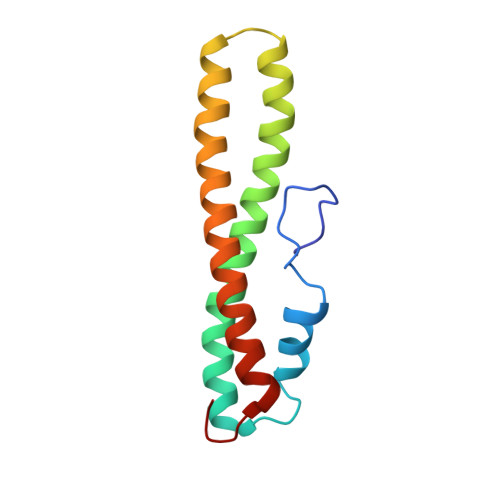RAP uses a histidine switch to regulate its interaction with LRP in the ER and Golgi.
Lee, D., Walsh, J.D., Mikhailenko, I., Yu, P., Migliorini, M., Wu, Y., Krueger, S., Curtis, J.E., Harris, B., Lockett, S., Blacklow, S.C., Strickland, D.K., Wang, Y.X.(2006) Mol Cell 22: 423-430
- PubMed: 16678114
- DOI: https://doi.org/10.1016/j.molcel.2006.04.011
- Primary Citation of Related Structures:
2FTU - PubMed Abstract:
The receptor associated protein (RAP) is an antagonist and molecular chaperone that binds tightly to low-density lipoprotein receptor family members in the endoplasmic reticulum (ER). After escorting these receptors to the Golgi, RAP dissociates from the receptors. The molecular mechanism of the dissociation has been unknown until now. The solution structure of RAP-D3 domain presented here reveals a striking increase in positively charged residues on the surface of this RAP domain due to protonation of solvent-exposed histidine sidechains as the pH is reduced from a near neutral pH of the ER to the acidic pH of the Golgi. Structure-based mutagenesis studies in vitro and in cells confirm that the protonation of histidine residues as a consequence of the pH changes modulate the binding/release of RAP from LRP. This histidine switch may serve as a general mechanism for regulating cell trafficking events.
Organizational Affiliation:
Protein-Nucleic Acid Interaction Section, Structural Biophysics Laboratory, National Cancer Institute at Frederick, National Institutes of Health, Frederick, Maryland 21702, USA.














